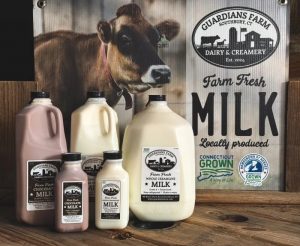
Across California’s Central Valley, middle schoolers are waking up before sunrise each day to start their chores. But they aren’t mopping floors or doing dishes. They are milking cows.
These kids make up a small but essential part of just over 1,000 families across the state who together produce almost a fifth of America’s milk. California produces more milk than any other state, but the outlook for the industry is more dire now than we’ve seen in decades.
California must lead the charge in de-monopolizing milk, focusing less on cheap exports and more on stabilizing milk prices and protecting rural communities and their smaller family farms who struggle to make ends meet.
Opinion
Meanwhile, dairy is falling out of favor. Dietary preferences and restrictions have evolved to shift away from cow milk products for many members of younger generations, and consumers are searching for lactose-free or vegan alternatives at supermarkets more and more. The valuation of the global dairy alternative market is expected to almost double in the next four years.
There has been an almost seven-fold increase in the amount of milk produced by the state in the last five decades: 5.6 million pounds produced per year in 1950 compared to 39 million pounds today. Yet in 1950, California was home to 19,000 dairies, and in the 70-some years since, the state has seen a 94% decline in farms.
Forced to produce, dairies are left with two choices: hope that a manufacturing plant will purchase a sizable portion for export or waste millions of pounds of milk. According to a Food and Water Watch analysis, the second choice is more common, and the “average American dairy” has turned a profit only twice in two decades.
California needs a greater focus on stabilizing milk prices in the form of a primary policy strategy for managing supply and demand. Prices to the dairy farmer have fluctuated in a vicious cycle: Smaller farms forced to sell at such volatile prices are either unable to find a buyer or determine that they will not be able break even — let alone turn a profit — given high production costs, which are now rising at a faster rate than the milk selling price.
As a result, manufacturers turn to large corporation-run farms with enough funds to counteract low prices. Those farms get richer, rapidly breed more cattle, produce more milk and squeeze small family-owned businesses out of the market.
Corporate farms have created powerhouses that have monopolized the dairy industry. The rate of monopolization is staggering: A recent U.S. Department of Agriculture (USDA) report found that “the pace of consolidation in dairy exceeds that in most of U.S. agriculture.”
To address this, California should implement a robust supply management program. Small dairies need an appropriate quota for milk production which for a reasonable profit in a competitive market considering a newly set price floor. Finally, Congress should step in to stop future large agribusiness mergers and enact antitrust legislation for an industry often overlooked.
It’s unlikely that leading dairy monopolies will appreciate a policy pivot. However, a consumer’s willingness to divest from dairy powerhouses and invest in the family farm down the road will promote the diversification of the market and give a chance for the return and persistence of a once-booming craft.
The dairy business has passed from one generation of Californians to the next for over a century. As our youngest generation rises with the sun day after day, they eagerly await their shot at upholding a storied legacy.
Grant Moore is a lifelong Californian and an undergraduate at Stanford University studying political science. He is the grandson of Ruben S. Ramirez, Sr., a former decades-long director of marketing and milk quality for the California Milk Advisory Board.
You can now read the most important #news on #eDairyNews #Whatsapp channels!!!
🇺🇸 eDairy News INGLÊS: https://whatsapp.com/channel/0029VaKsjzGDTkJyIN6hcP1K























